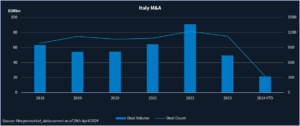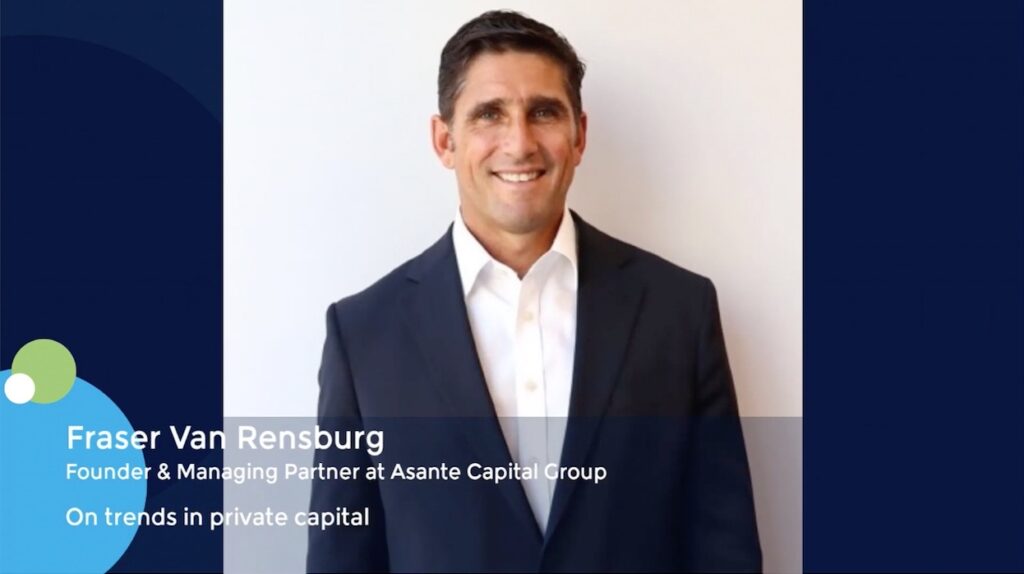Italian dealmakers ponder generational transitions in family-run businesses – Advisory Viewer
Italian dealmakers are thinking hard about generational changes in family-owned businesses as a source of mandates.
There are many “beautiful” family businesses that are no longer able to guarantee continuity by passing the baton to younger family members, Mascia Cassella, partner at Masotti Cassella, said. This can create opportunities for dealmakers after the companies decide to do deals with strategic or financial partners, she added.
Of the 100 oldest companies in the world, 13 are Italian, including a bell foundry that is more than 1,000 years old, according to family-business association AIDAF. Nearly 75% of the 422 companies listed on the Milan stock exchange are controlled by families, it said. The association also cited earlier research showing that nearly half of Italian companies are controlled by families, including many small and medium-sized enterprises (SMEs).
The food, fashion and healthcare sectors, which are centres of excellence, are experiencing strong growth, which is creating great opportunities, particularly as they adapt to a model that aims to create aggregation centers for Italian SMEs, Luca Cuomo, partner at DWF, said.
M&A activity is also starting to show up in new sectors of the Italian industry, for example in the fashion or furniture markets, according to Valentino Durante, counsel at Casa & Associati.
While SMEs and family businesses can offer many interesting mandates, big-ticket deals remain a key source of revenues, even though they are the most difficult ones to obtain.
Italy has registered EUR 21.6bn worth of deals in the year to date (YTD), which is an astonishing 6x increase compared to the same period in 2023, according to Mergermarket data. The high deal volume came on the back of a few ongoing big-ticket deals, the largest being the acquisition of Vodafone Italia by Swisscom [SWX:SCMN] for EUR 8bn, which was announced in March.

Meanwhile, M&A revenues in Italy were also off to a good start to the year with almost EUR 180m under the belt in the year-to-date [YTD; 25 April 2024], according to Dealogic data*. This figure, which is weighted to deal closures instead of announcements, was on par with the three-year average.
Industrials seems like it will be the sector to watch: for the past four years, revenues from this space have dominated, with the figure rising consecutively to almost 25% in the YTD. Clients in financial institutions and energy and natural resources shelled out the second and third highest in fees: both sectors taking double-digit chunks of the pie.
Let’s talk
While the announcement of big deals might capture the headlines, advisors are thinking hard about earlier-stage phases in the process. The main problems these days are related to negotiations and due diligence, said Durante.
Processes are often slowed down by the small size of companies’ administrative staff and by data management which is often not fluid, Durante said.
Significant challenges in many deals include cost management, client retention, combining investment operations, legal and regulatory issues, systems and technology consolidation, among others, Francesco Guarnieri, senior partner and founder at Guarnieri & Partners, said.
Some firms fail to address these flaws, causing a negative impact on the business and their clients, Guarnieri said. In order to avoid this, it would be necessary for the parties to conduct a more careful analysis of both pre- and post-acquisition issues when hiring an M&A consultant, he added.
Close cooperation between clients and advisors in the pre-mandate phase is crucial, and the identification of possible macro issues may facilitate the subsequent management of the deal, Guarnieri said.
To deliver synergies and create value, clients should work closely with their advisors to keep the corporate and M&A strategies meaningfully aligned. If synergies do not materialize, this can cause major problems in finalizing the transactions, Guarnier said.
Mind the gap
Valuation gaps are still on the minds of Italian advisors. “We note some difficulties in communication between the parties in relation to the methods of calculating the value of the company,” Durante said.
Durante brought attention to the composition of the M&A advisory panel as key to helping overcome issues in this regard. If the panel is composed only of legal and financial advisors who are too driven on the tax side, the transactions risk being too anchored to a “gain” rather than “long-term return” logic, he said.
A poor understanding of the targets’ business and of the transaction consequences also often cause deals to fail these days, Guarnieri said.
An accurate valuation report generally helps the people involved in the M&A process to identify limits, challenges and to enable factors, such as value acquisition targets/synergies and evaluations from a financial perspective, Durante said.
Sectors to watch
Dealmakers predict M&A to strengthen, particularly in the second half of 2024. Companies with strong research and development (R&D), innovative products, and industrial value-added services are in focus.
Advisors should search for mandate opportunities in dynamic sectors featuring rapid technological growth and good investors’ returns for investors, such as technology – with specific focus on aerospace and defense – and energy, particularly renewable energy and automotive with electric vehicles, Guarnieri said.
*Dealogic Revenue Data: Dealogic uses a proprietary revenue model to estimate investment banking fees across four key products: M&A, equity capital markets (ECM), bonds or debt capital markets (DCM), and loans. Revenues derived from any geography/sector indicate fees generated by fee-payers based in that geography/sector. M&A fees are calculated 10% upon announcement and 90% upon completion.












